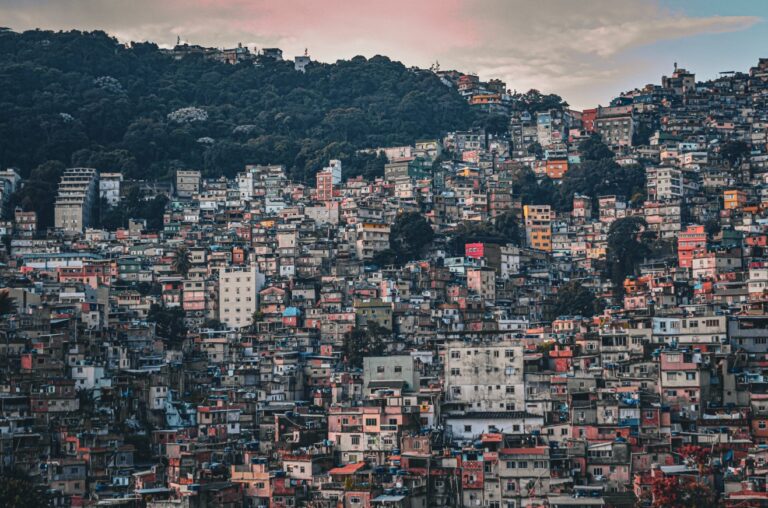Economic difficulties have left certain Latin America nations struggling with poverty, adding to the region’s rich cultural heritage and varied landscapes. Because their economies are so dependent on a small number of commodities, many of Latin America’s poorest nations are especially susceptible to swings in global commodity prices.
All the way from Bolivia to Colombia, these countries deal with a tangled web of variables that affect their economy. In this article, we’ll delve into six poorest countries in Latin America shedding light on the unique struggles each faces.
Table of Contents
The 6 poorest countries in Latin America
1. Peru
Peru, a country on the western tip of Latin America, is home to a wide variety of cultures. But the country’s cultural riches and diverse landscapes aren’t enough to overcome the economic obstacles that have kept it from progressing, and it is now the sixth poorest Latin American nation.
Income disparity is one of Peru’s most pressing problems. The COVID-19 pandemic had a disproportionately negative impact on its economy and population. The country has not yet entirely recovered from the increase in poverty that the health crisis generated due to the loss of life and work. Although the economy has grown, not everyone has reaped the rewards.
Historically, extractive industries, such as mining and natural gas, have been vital to Peru’s economy. Although these areas make a substantial dent in Peru’s GDP, they also leave the country vulnerable to swings in global commodity prices.
2. Colombia
Colombia, a country in the northwest region of Latin America, has a varied landscape, a long and eventful past, and a vibrant culture. The nation’s economy has grown, yet there are still problems that prevent everyone from benefiting equally.
The economic stability of Colombia has been affected by the nation’s history of political instability and armed conflicts. Economic inequality in Colombia has its roots in the country’s land ownership patterns. The agricultural sector has faced challenges due to the unequal distribution of land and issues around land rights.
The mining and oil industries have long been the backbone of Colombia’s economy. The country is susceptible to changes in global commodity prices due to its reliance on these commodities. Although the overall poverty rate in Colombia has been declining, there are still areas where people live in extreme poverty.
People in indigenous communities and areas ravaged by conflict are among the most vulnerable, and they frequently encounter barriers to education, healthcare, and economic possibilities.
3. Ecuador
Ecuador is well-known for its varied habitats, which include the Galápagos Islands and the Amazon rainforest. The country is located in northwest South America, on the equator. The country’s environmental riches and ongoing economic difficulties, however, create a precarious equilibrium.
Oil exports bring significant money for Ecuador, but they also put the country at risk when oil prices fluctuate across the world. While cocoa, flowers, and bananas all contribute significantly to Ecuador’s economy, those who work in agriculture tend to receive lower wages and have a higher poverty rate than those in most other industries.
Although it increased stability, the adoption of the US dollar as Ecuador’s official currency in 2000 also reduced the country’s ability to implement flexible monetary policies. Budgetary difficulties, such as the national debt, have limited government expenditure and development programmes.
4. Paraguay
Located in central South America, the agricultural and natural resource-rich nation of Paraguay is well-known worldwide. But the country’s reliance on agriculture is causing economic problems.
One of the most important parts of Paraguay’s economy is agriculture, which accounts for a large portion of the GDP. While agriculture does bring in money, Paraguay is vulnerable to swings in global commodity prices—especially for soybeans and other agricultural products.
It is crucial to implement measures that encourage economic diversity since a country’s susceptibility to external economic shocks increases when it is overly reliant on a single industry.
With a Gini coefficient ranging from 45 to 46, Paraguay experiences a high level of income inequality. In Paraguay, the income distribution is as follows: the top 10% receive 37.1% of the revenue, while the bottom 40% receive a total of 12.5% (Borgen Project). Indigenous Paraguayans face disproportionate rates of poverty and starvation, and fewer than 40% of the population completes secondary school.
5. Suriname
Natural resources such as bauxite, gold, and other minerals define Suriname, a country in northern South America. The country’s economic development is hindered by a distinct combination of obstacles, even though it has a wealth of resources.
The extremely high Gini coefficient in Suriname is indicative of the country’s extreme economic disparity. Seventy percent of the population was considered to be living in poverty. The country is extremely susceptible to swings in the mineral market because its primary exports are gold and aluminium oxide.
Improving connectivity and efficiency requires investments in infrastructure, such as transportation and electricity. Economic development and competitiveness in Suriname are boosted by ongoing measures to improve infrastructure.
6. Bolivia
Despite its central location in South America, Bolivia has the lowest per capita income of any Latin American country. Its economic problems originated in its shift from a centrally planned to a market-oriented economy.
The country’s economic woes stem from its dependence on commodity exports, social inequality, and inadequate educational opportunities, all of which exacerbate the effects of its abundant natural resources. More than 80% of Bolivians are poor, and the country has a high unemployment rate and a large underemployment rate.
Overall, Bolivia has a lower poverty rate than Mexico. Over the last many years, the country’s economy, government, and foreign reserves have surpassed all of Latin America’s. Given these tendencies, it’s not out of the question that the nation will eventually move up the rankings.
Reducing poverty in Latin America
As we go more into the economic reality of these six countries, it becomes abundantly evident that addressing the specific difficulties that each of them is confronted with is absolutely necessary in order to promote sustainable development and reduce poverty in the Latin American countries.
Read also: Tensions rise in South America: Maduro wins referendum to annex rich region of Guyana to Venezuela












